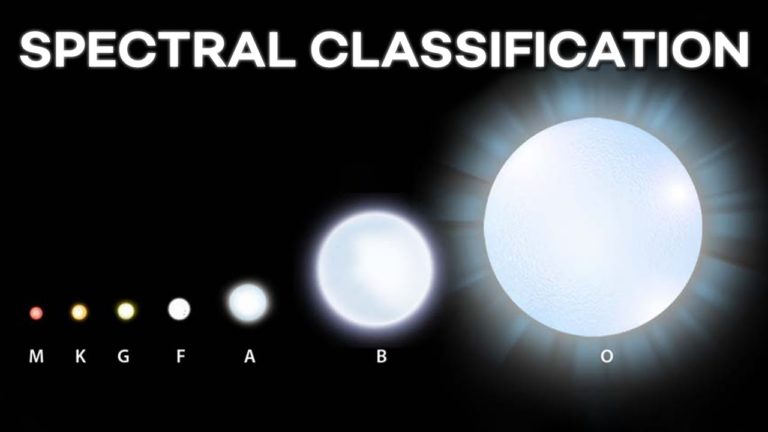Stellar Classification: What We Can Learn From Stars
Before going into the merits, however, it is good to say something about spectroscopy, as it is the basis of the same stellar classification. Spectroscopy is a very powerful method of investigation of the structure of matter which is based on the analysis of the decomposition of the light emitted by it into its fundamental wavelengths.
It is, on the analysis of the electromagnetic spectrum. In astrophysics it is essential to obtain information on the chemical composition and physical conditions of stars.
But what is the electromagnetic spectrum?
• I – almost continuous spectrum with few lines, the most intense of which are due to hydrogen (0 stars the lines of the Balmer series of hydrogen show their maximum. The K line of ionized calcium grows over the whole class.
• II – spectrum similar to the solar one, characterized, next to lines weaker than hydrogen, by a large quantity of metallic lines (sodium, calcium, iron) and by many other thin ones (yellow or orange stars such as Sun, Capella);
• III – spectrum with many thin lines and also with very wide and shaded lines called “bands”, with traces of metals and hydrocarbons (orange or red stars such as Betelgeuse, Antares, Mira Ceti);
• IV – spectrum with bands due to carbon, but without metals.
Here is the scheme:
• O – presence of strong absorption lines due to ionized helium. There are absorption lines of ionized helium and hydrogen. The stars belonging to this class have surface temperatures between 28000 and 35000 kelvins (remember that 0 kelvins correspond to -273.15 ° C).
• B – hydrogen lines grow. The three helium lines are at their maximum intensity in B2, they disappear completely in B9. The lines of ionized silicon, oxygen and magnesium are visible. Surface temperatures range from 10,000 Kelvin to 28,000 Kelvin.
• A – in class A0 the lines of the Balmer series of hydrogen show their maximum. The K line of ionized calcium grows over the whole class. Surface temperatures are between 7500 Kelvin and 10000 Kelvin.
• F – hydrogen lines decrease, ionized calcium lines increase. The first lines of metals appear. Stars of this class have surface temperatures between 6000 Kelvin and 7500 Kelvin.
• G – is the class to which the Sun belongs (G2). The lines of hydrogen are further decreasing. The K line of the stock is strengthened. Present numerous lines of neutral metals. Surface temperatures range from 4900 Kelvin to 6000 Kelvin.
• K – the lines of metals grow while those of hydrogen disappear. Surface temperatures are between 3500 Kelvin and 4900 Kelvin.
• M – corresponding to group III of Secchi. The titanium oxide bands, faded towards red, grow for the whole class. Surface temperatures are less than 3500 Kelvin.
Do not forget to share your opinion with us to provide you with the best posts !




0 Comments